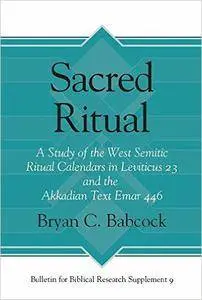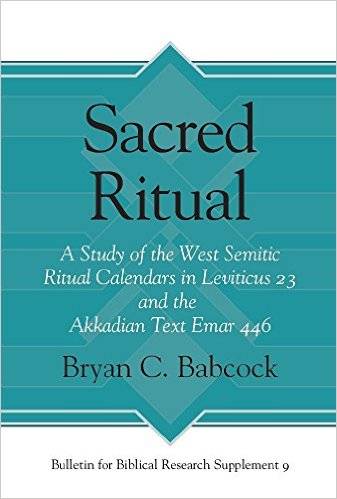Sacred Ritual: A Study of the West Semitic Ritual Calendars in Leviticus 23 and the Akkadian Text Emar 446 by Babcock Bryan
2014 | PDF | 288 pages | ISBN-10: 1575068265 | English | 2.2 MB
2014 | PDF | 288 pages | ISBN-10: 1575068265 | English | 2.2 MB
Israelite festival calendar texts (Exod 23; 34; Lev 23; Num 28 29; Deut 16; and Ezek 45) share many features; however, there are also differences. Some of the most-often-cited differences are the following: festival dates, festival locations, date of the New Year, festival timing, and festival names. Scholars have explored these distinctions, and many have concluded that different sources (authors/redactors) wrote the various calendars at different times in Israelite history. Scholars use these dissimilarities to argue that Lev 23 was written in the exilic or postexilic era. Babcock offers a new translation and analysis of a second-millennium B.C. multimonth ritual calendar text from Emar (Emar 446) to challenge the late dating of Lev 23. Babcock argues that Lev 23 preserves an early (2nd-millennium) West Semitic ritual tradition.
Building on the recent work of Klingbeil and Sparks, this book presents a new comparative methodology for exploring potential textual relationships. Babcock investigates the attributes of sacred ritual through the lens of sacred time, sacred space and movement, sacred objects, ritual participants, and ritual sound. The author begins with a study of ancient Near Eastern festival texts from the 3rd millennium through the 1st millennium. This analysis focuses on festival cycles, common festival attributes, and the role of time and space in ritual. Babcock then moves on to an intertextual study of biblical festival texts before completing a thorough investigation of both Lev 23 and Emar 446. The result is a compelling argument that Lev 23 preserves an early West Semitic festival tradition and does not date to the exilic era refuting the scholarly consensus.
This illuminating reading stands as a model for future research in the field of ritual and comparative textual studies.



